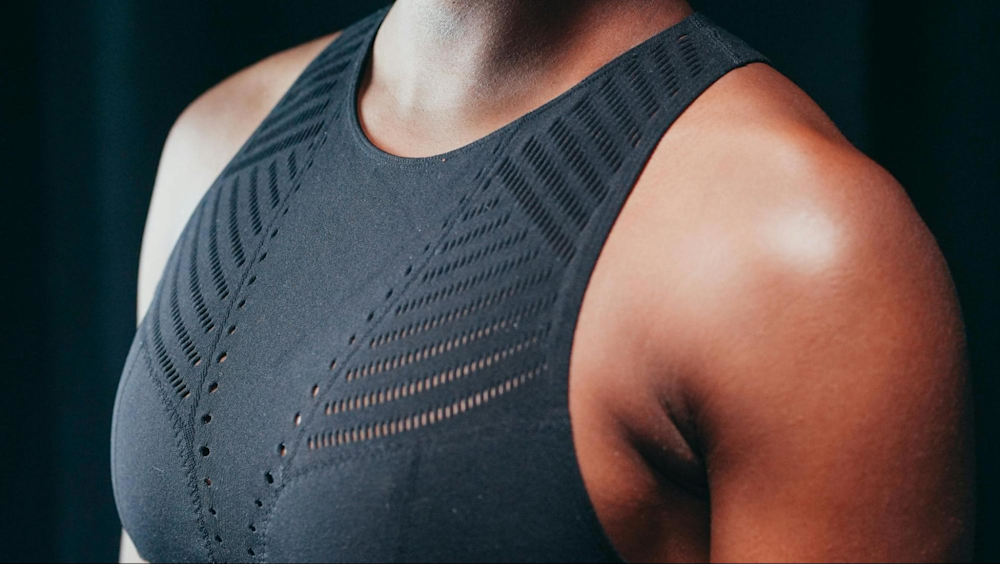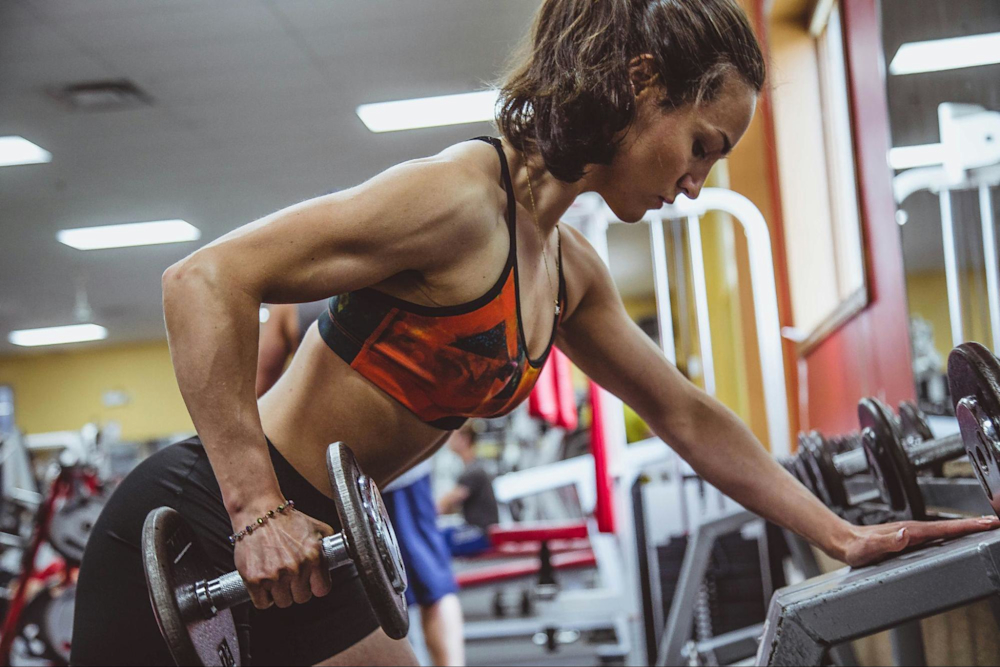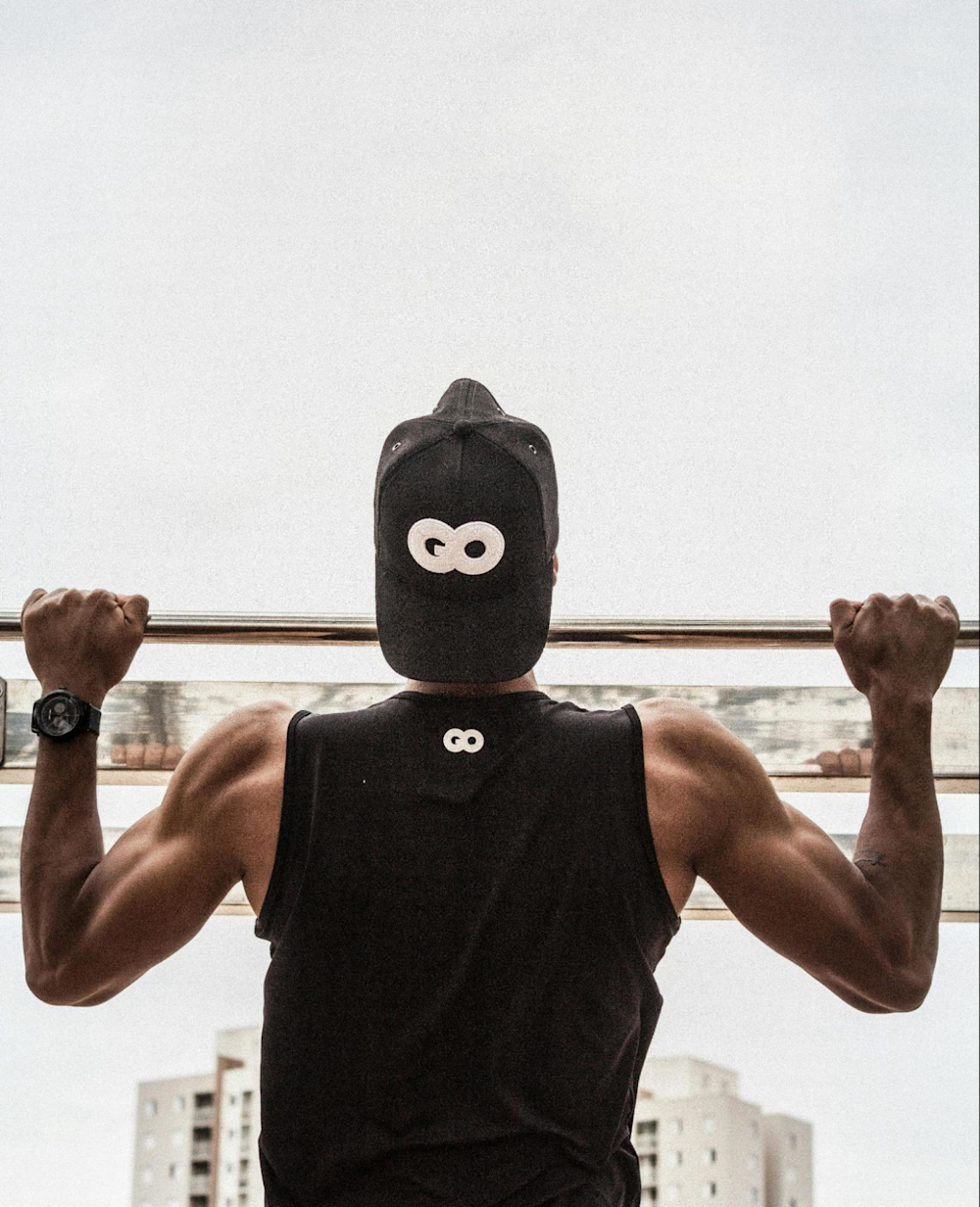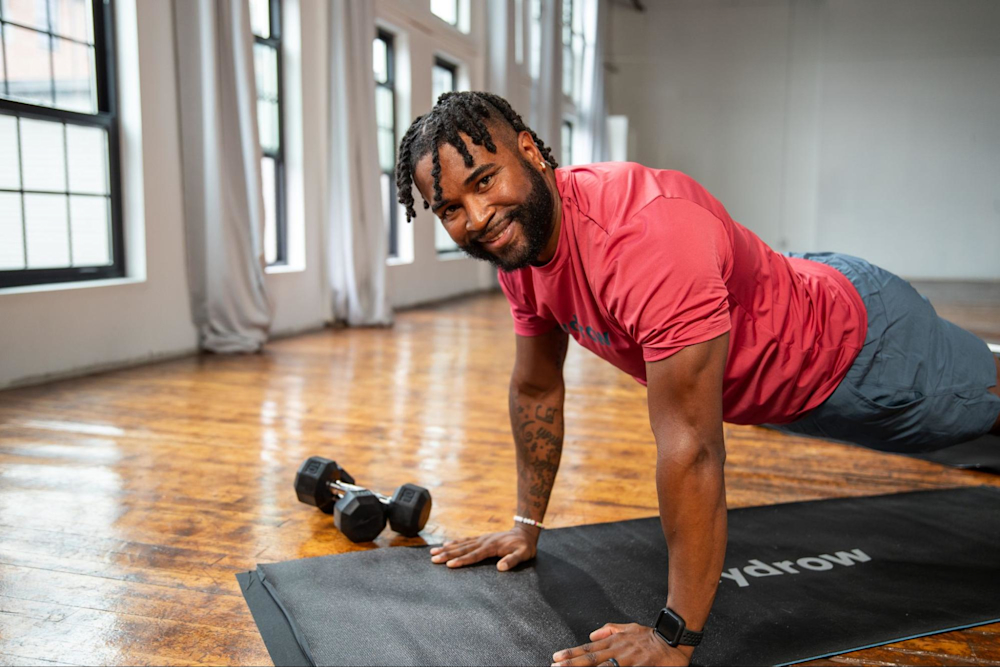15 Shoulder Workouts for Maximum Strength and Flexibility
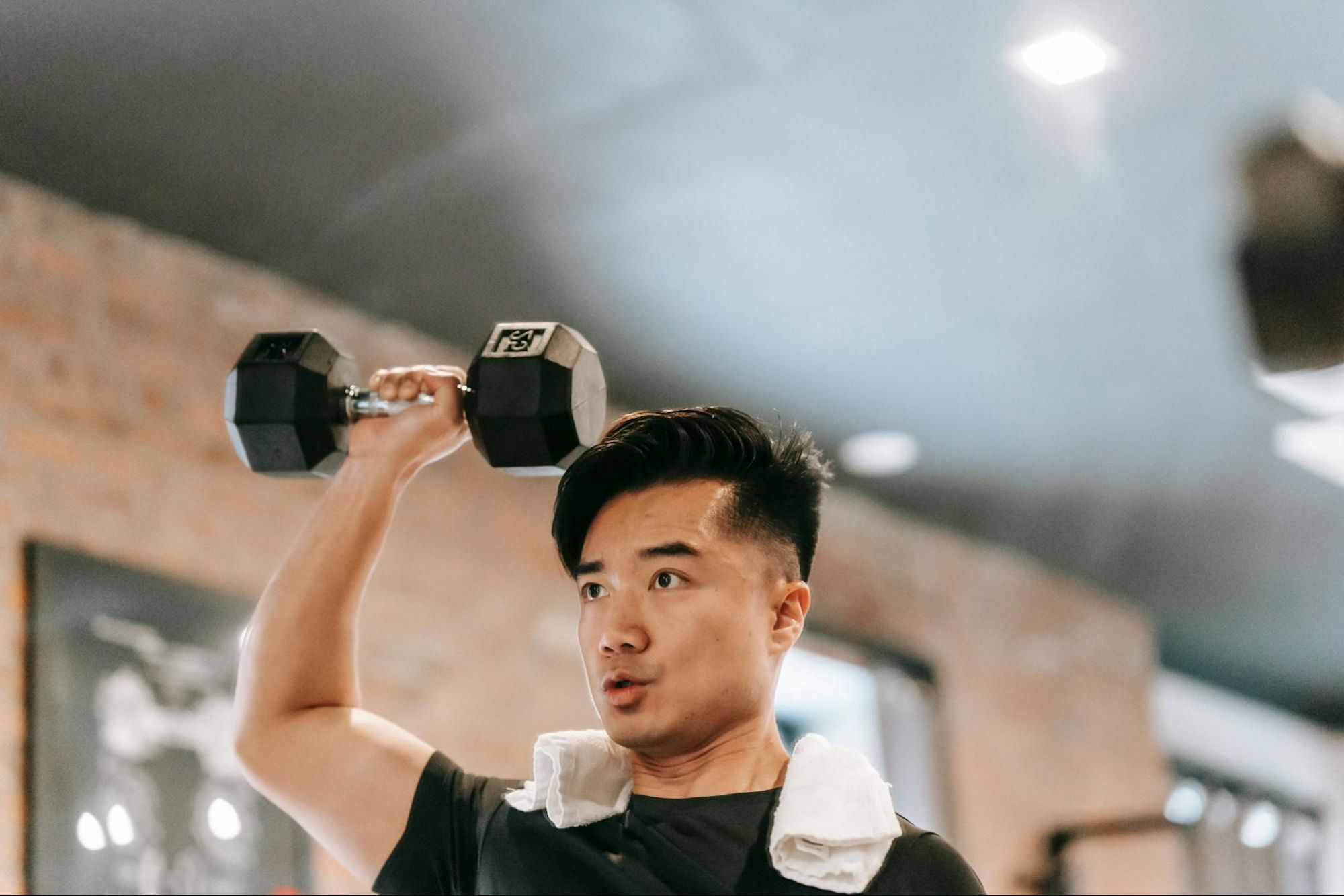
Shoulder workouts are often overlooked, but they play a vital role in overall fitness and daily functionality. Your shoulders are involved in almost every upper-body movement, from lifting groceries to reaching for something on a high shelf.
Prioritizing shoulder workouts not only enhances your performance in various activities, but also helps prevent common exercise injuries. Additionally, shoulder workouts improve flexibility, which is crucial for maintaining a full range of motion in your arms and helps build a strong posture. Whether you're an athlete or someone looking to stay active, incorporating shoulder workouts into your routine can lead to a stronger, more resilient body.
In this blog, we’ll explore everything you need to know about shoulder workouts, including:
Let’s jump in!
What should shoulder workouts do?
Effective shoulder workouts should focus on several key areas, including:
Functional strength: Shoulder workouts should make it safer to do everyday tasks such as reaching, lifting and pushing.
Flexibility: Enhancing flexibility in your shoulder joint allows for a wider range of motion, which is essential for various sports.
Stability: Good shoulder workouts strengthen the shoulder muscles, contributing to joint stability and reducing the risk of shoulder-related injuries.
Posture improvement: Strong shoulders support better posture, helping to alleviate back and neck pain that can result from poor posture.
Enhanced performance: Strong shoulders improve your performance in athletic activities, allowing for more powerful throws, lifts, and movements.
Injury prevention: A well-rounded shoulder workout routine helps balance muscle development, reducing the risk of overuse injuries.
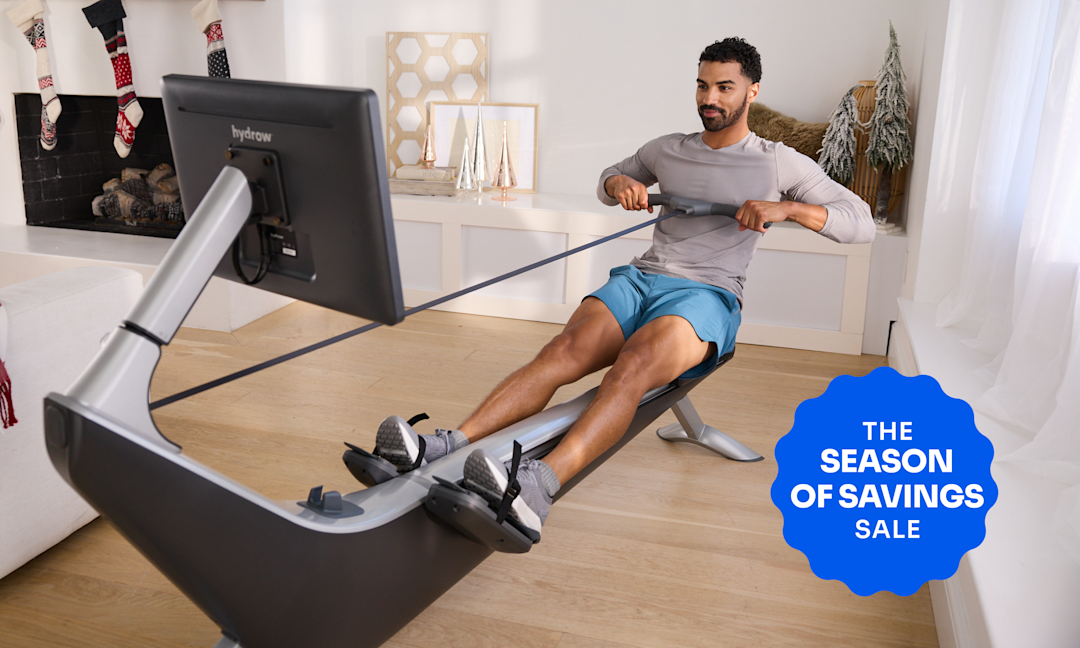
Season of Savings Sale
Just in time for the holidays—bring a Hydrow home. Don't miss these exclusive offers!
15 shoulder workouts to add to your fitness routine
Here is a list of effective shoulder workouts that can easily be integrated into your routine, along with a brief description of what the workout is good for and step-by-step instructions for doing each one.
1. Shoulder press
This classic exercise targets the deltoids, triceps, and upper back.
How to do a shoulder press
Stand or sit with your feet shoulder-width apart.
Hold a dumbbell in each hand at shoulder height.
Engage the core for back support.
Press the weights overhead until your arms are fully extended.
Lower the weights back to shoulder height.
Repeat for three sets of 8–12 reps.
2. Lateral raise
Lateral raises isolate and strengthen the lateral deltoids.
How to do lateral raises
Stand with a dumbbell in each hand at your sides.
Keeping your elbows slightly bent, raise the weights out to the sides until they reach shoulder height.
Lower the weights back to your sides.
Perform three sets of 12–15 reps.

Explore Hydrow’s library of Circuit Training workouts from around the world.
3. Front raises
Front raises are a great way to target the front deltoids.
How to do front raises
Stand with feet shoulder-width apart, Slight bend in the knees, holding a dumbbell in each hand.
Raise one weight in front of you to shoulder height while keeping your arm straight.
Lower it back down and repeat with the other arm.
Complete three sets of 8–12 reps per arm.
4. Bent-over dumbbell fly
Bent-over dumbbell fly workouts target the rear deltoids and upper back.
How to do a bent-over dumbbell fly
Bend at the hips until your torso is at or nearly parallel to the floor, keeping your back straight, and core engaged.
Hold a dumbbell in each hand, arms hanging down.
With a slight bend in your elbows, raise the weights out to the sides.
Squeeze your shoulder blades together at the top of the movement.
Return to the starting position. Perform sets of 8–12 reps.
5. One-arm, half-kneeling overhead press
This is an effective exercise for building shoulder strength and stability while engaging your core.
How to do a one-arm, half-kneeling overhead press
Start by kneeling on one knee (the back knee) on a mat or soft surface. Your front knee should be bent at a 90-degree angle, stacked over your front foot flat on the ground in front of you.
Hold a dumbbell or kettlebell in the hand of the kneeling knee (e.g., if your right knee is down, hold the weight in your right hand).
Bring the weight to shoulder height with your elbow bent at 90 degrees.
Press the weight straight up overhead while keeping your core tight. As you press, ensure your wrist stays straight and your shoulder doesn’t elevate towards your ear. Extend your arm fully overhead.
Slowly lower the weight back to shoulder height, maintaining control throughout the movement.
Perform sets of 8–12 reps on one side before switching to the other side.
6. Push-up plus
This great variation of the traditional push-up adds an extra movement to enhance shoulder stability and activate the serratus anterior.
How to do a push-up plus
Start in a standard push-up position with hands slightly wider than shoulder-width apart, feet together, and body in a straight line from head to heels.
Lower your body towards the ground by bending your elbows, keeping them close to your body.
Go down until your chest is just above the ground.
Push back up to the starting position, keeping your core engaged and your body straight.
At the top of the push-up, once your arms are straight, perform a scapular protraction by pushing your shoulders forward. This means you should round your upper back slightly by pushing your shoulder blades apart without bending your elbows.
Hold this position for a brief moment before returning to the starting position.
Aim for 8–10 repetitions, focusing on maintaining good form throughout.

Did You Know?
Over 90% of Hydrow members are still active one year later.
7. Plank to downward dog
This dynamic move builds shoulder stability and flexibility.
How to do a plank to downward dog
Start in a plank position.
Push back into downward dog.
Maintain an engaged core.
Return to the plank position.
Repeat for 10–12 reps.
8. Bent-over rows
Bent-over rows primarily work the rhomboids, lats, and traps, while also strengthening biceps, deltoids, and core.
How to do bent-over rows
Stand with your feet shoulder-width apart, holding a barbell with both hands, feet slightly wider than shoulder-width.
Bend your knees slightly. Hinge at your hips to lower your torso, keeping your back straight and almost parallel to the ground.
Keep your head in a neutral position, looking down or slightly ahead.
Pull the barbell towards your lower ribcage or abdomen, keeping your elbows close to your body as you lift the bar. Squeeze your shoulder blades together at the top of the movement.
Slowly lower the barbell back to the starting position, fully extending your arms.
Perform sets of 6–10 reps.
9. One-arm dumbbell rows
This dynamic movement strengthens the back and shoulder muscles while improving cross-body muscle imbalances (core).
How to do one-arm dumbbell rows
Place your left knee and left hand on a bench for support. Your right foot should be on the ground, slightly behind you. Keep your back flat and parallel to the ground, engaging your core.
With your right hand, grasp the dumbbell. Your arm should be fully extended towards the floor.
Pull the dumbbell towards your hip, keeping your elbow close to your body.
Slowly lower the dumbbell back to the starting position, fully extending your arm.
Complete sets of 6–12 reps, switching sides after each set.
10. Resistance band pull-aparts
Resistance band pull-aparts are great for shoulder stability and posture.
How to do resistance band pull-aparts
Hold a resistance band with both hands at shoulder height.
Pull the band apart, keeping your arms straight.
Return to the starting position.
Aim for three sets of 15–20 reps.
11. T-push-up
T-push-ups are a variation of the push-up that helps enhance shoulder stability.
How to do a T-push-up
Begin in a push-up position.
Perform a push-up, then rotate your body to one side, extending one arm toward the ceiling.
Return to the starting position and repeat on the other side.
Do sets of 4–6 reps per side.
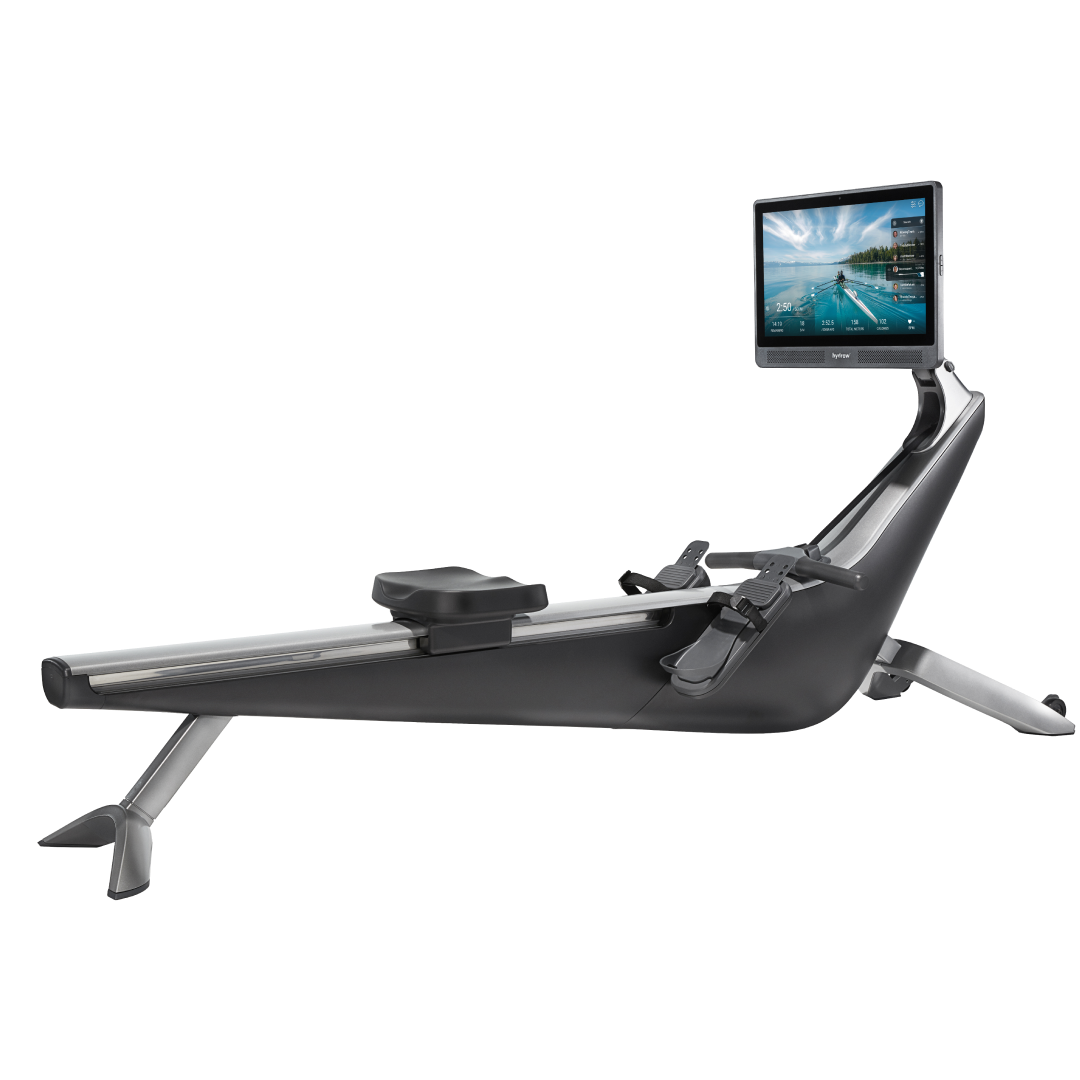
Cardio and Strength, Combined
Burn calories and build muscle with a Hydrow rowing machine.
12. Pike push-up
Pike push-ups focus on the shoulders more than regular push-ups.
How to do a pike push-up
Start in a downward dog position.
Lower your head towards the ground by bending your elbows.
Push back up to the starting position.
Complete sets of 4–8 reps.
13. Shoulder taps
This stability exercise engages the core and shoulders.
How to do shoulder taps
Start in a plank position with feet shoulder-width apart.
Tap one shoulder with the opposite hand. Try to keep your hips level.
Alternate sides while maintaining a stable core.
Perform sets of 5–10 taps per side.
14. TYWs
TYWs improve shoulder stability and upper-back strength.
How to do TYWs
Find a flat surface, like an exercise mat. You can use light dumbbells or just your body weight if you're starting.
Lie face down on the bench or mat, with your arms hanging off the edge. Your head should be in a neutral position, looking straight down.
Start with your arms extended straight out to the sides (like a “T”). Squeeze your shoulder blades together as you raise your arms to shoulder height. Imagine you're trying to squeeze a pencil between your shoulder blades. Hold for a moment, then lower back down.
Next, move your arms into a “Y” position, with your thumbs pointing up and arms angled above your head. Raise your arms to shoulder height, squeezing your shoulder blades, then lower back down.
Bend your elbows to form a “W” shape, keeping your upper arms close to your sides. Raise your arms while squeezing your shoulder blades, then lower back down.
15. Scapular wall slide
Scapular wall slides improve shoulder mobility and help strengthen the muscles around the scapula.
How to do a scapular wall slide
Find a flat wall and stand with your back against it. Your feet should be a few inches away from the wall, and your body should be straight.
Press your lower back, shoulders, and head against the wall.
Raise your arms to shoulder height, bending your elbows at 90 degrees, so your arms look like a goalpost (this is your starting position).
Keeping your elbows and wrists in contact with the wall, slowly slide your arms up the wall while extending them overhead.
Focus on squeezing your shoulder blades together and maintaining contact with the wall.
Slowly lower your arms back to the starting position, ensuring your elbows and wrists stay in contact with the wall.
Perform sets 10–15 repetitions, maintaining control throughout.
How often should you train your shoulders?
For optimal results, aim to train your shoulders one to two times per week. Allow at least 48 hours of rest between sessions to let your muscles recover. Incorporating a variety of good shoulder workouts will ensure you’re hitting all areas of the shoulder and promoting balanced strength, mobility, and flexibility.
Example of a 10-minute shoulder workout
Here’s a quick workout you can do anywhere that includes some of the best shoulder workouts:
Exercise | Repetitions | Sets |
TYWs | 10 per side | 2 |
Push-up plus | 8 | 2 |
Shoulder taps | 5 per side | 2 |
One-arm, half-kneeling overhead press | 10 per side | 2 |
Bent-over rows | 10 | 2 |
Banded pull-aparts | 10 | 2 |
Improve your shoulder strength with Hydrow
Whether you're lifting, working out on a rowing machine, or playing other sports, strong shoulders can make a world of difference. If you're interested in expanding your fitness journey, check out Hydrow’s comprehensive workout library for more exercises and routines tailored to your goals.
If you’re new to strength work, Hydrow offers an extensive library of On the Mat strength classes, many of which include shoulder strength. Our world-class Athletes bring these workouts to you from scenic locations all over the world, making your workouts effective, engaging, and exciting. Embrace the benefits of strong shoulders with Hydrow today, for a more active and injury-free lifestyle!

Explore Hydrow's library of 5,000+ rowing, circuit training, yoga, Pilates, and mobility workouts.

